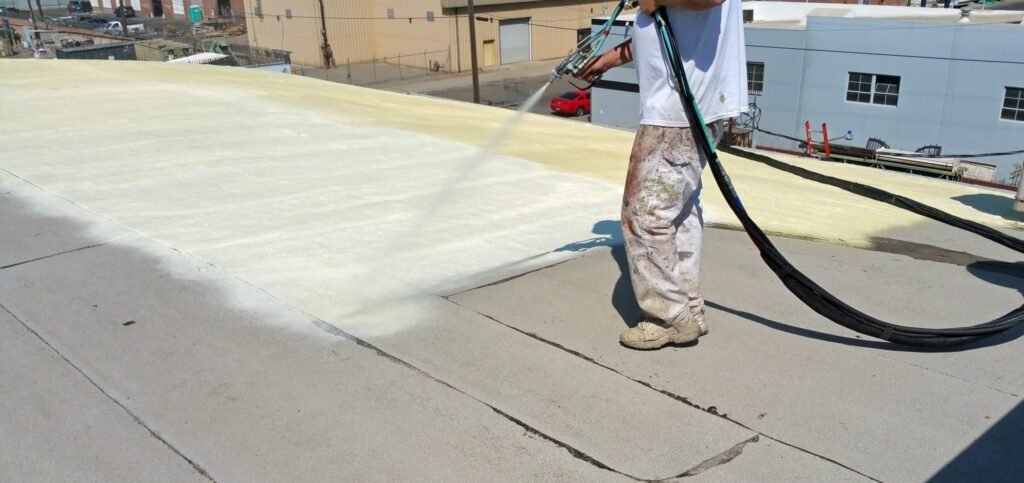LIQUID (SPRAY-FOAM)
What exactly constitutes foam roofing?
Foam roofing is a composite blend of isocyanate and polyol. These components are propelled through a spray gun, heating and applying them onto the roof surface. During application, the foam traps minute air bubbles within, rendering it highly effective in insulating the roof against both extreme heat and cold. Studies have demonstrated that foam roofing often yields energy savings exceeding 30% when compared to other roofing systems.

Flexible & Seamless
Due to its liquid application (expanding upon placement), foam roofing creates a continuous, seamless protective layer encompassing vents, pipes, and other roof penetrations. This feature proves particularly advantageous for commercial buildings with numerous perforations, eliminating the need and cost for additional flashing materials. It inherently possesses self-flashing properties, further enhancing its efficiency.
Environmentally Friendly
Requiring minimal upkeep, foam roofs generate less waste and necessitate fewer repairs. Moreover, when combined with the appropriate coating, foam roofing reflects heat, curbing the heat trapped in urban environments—a phenomenon known as the urban heat island effect.
Lightweight
Approximately one-eighth the weight of traditional roofing materials, foam offers enhanced architectural design flexibility and substantial cost savings by eliminating the necessity for structural reinforcements to support heavier materials.
Highly Durable
Paired with a protective coating, foam roofing exhibits remarkable resistance to weather and storm-related damages, demanding minimal maintenance and repair.
Cost-Effectiveness
Considered one of the most budget-friendly options for commercial roofing, foam roofing’s straightforward application significantly reduces labor costs.
Foam Roofing Repair & Maintenance
Foam roofing typically requires infrequent maintenance checks, with minimal repairs needed in most cases. Depending on the roofing material and surrounding roof conditions (like trees, vegetation, and debris), roof inspections might be unnecessary for up to 5 years. Periodic reapplication of the protective coating might be necessary due to wear. In case of damage—potentially from storm debris—prompt repairs are advisable to prevent leaks or any compromise to the building envelope.
We’re Passionate!
The experienced foam roofers at Maxtec Roofing Group, boasting over 40 years of expertise in foam and commercial roofing, consider foam roofing among their favorite types to install, replace, or repair. Its ease of manipulation allows us to effectively seal roofs against environmental elements.

